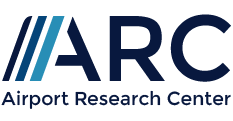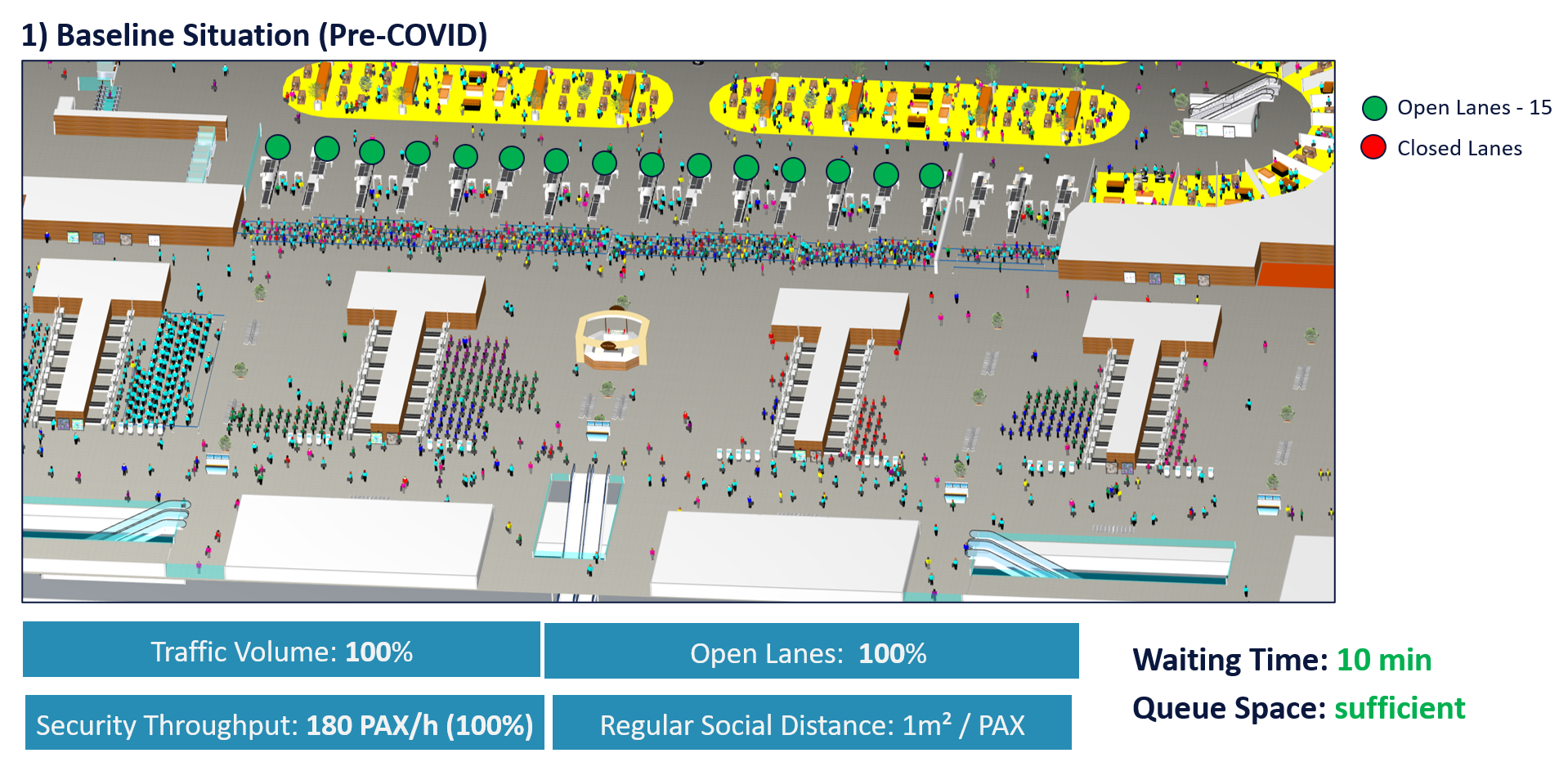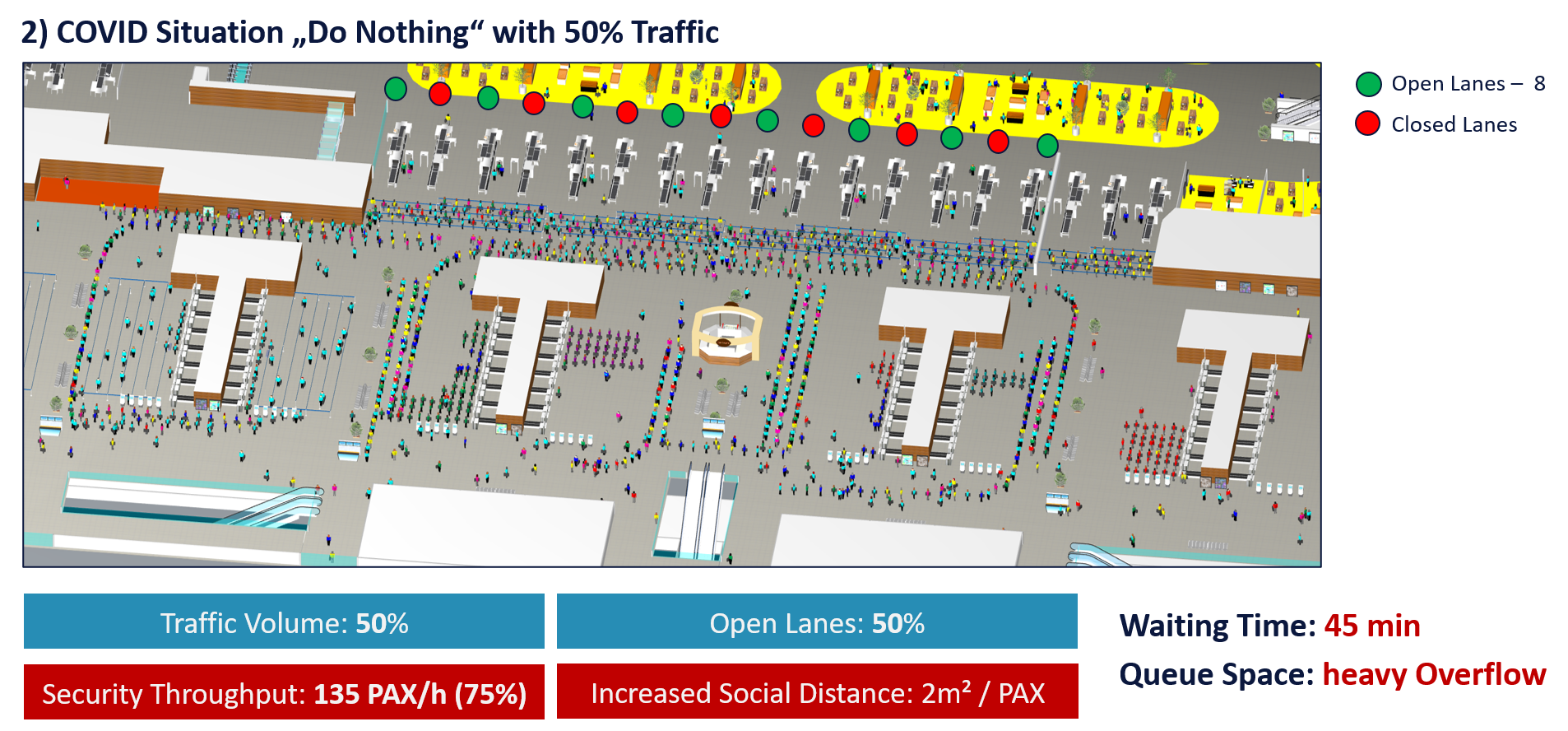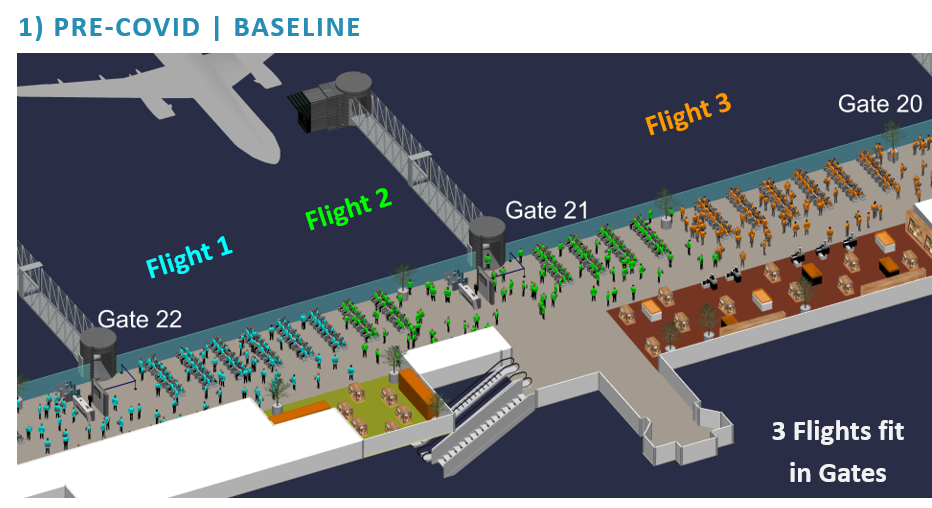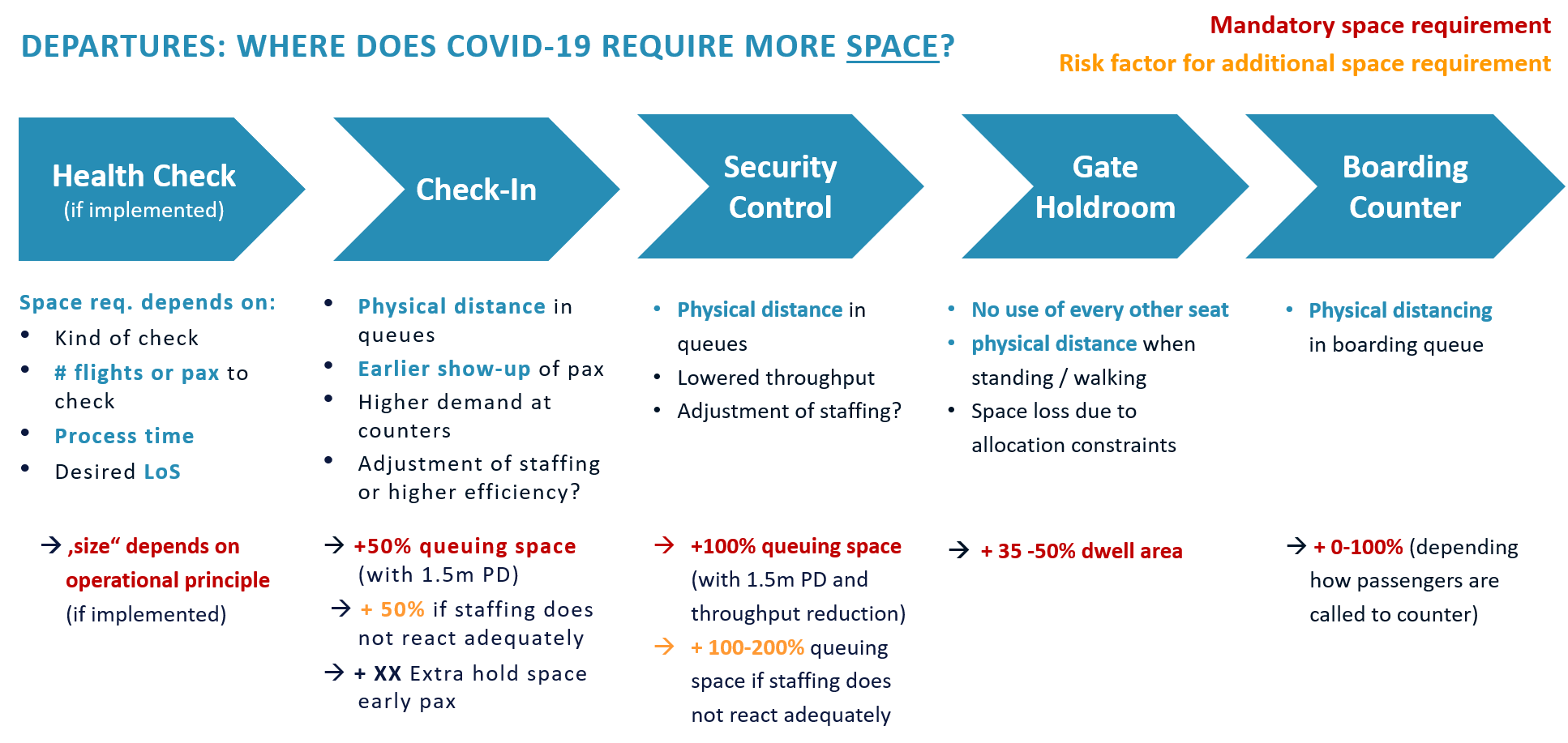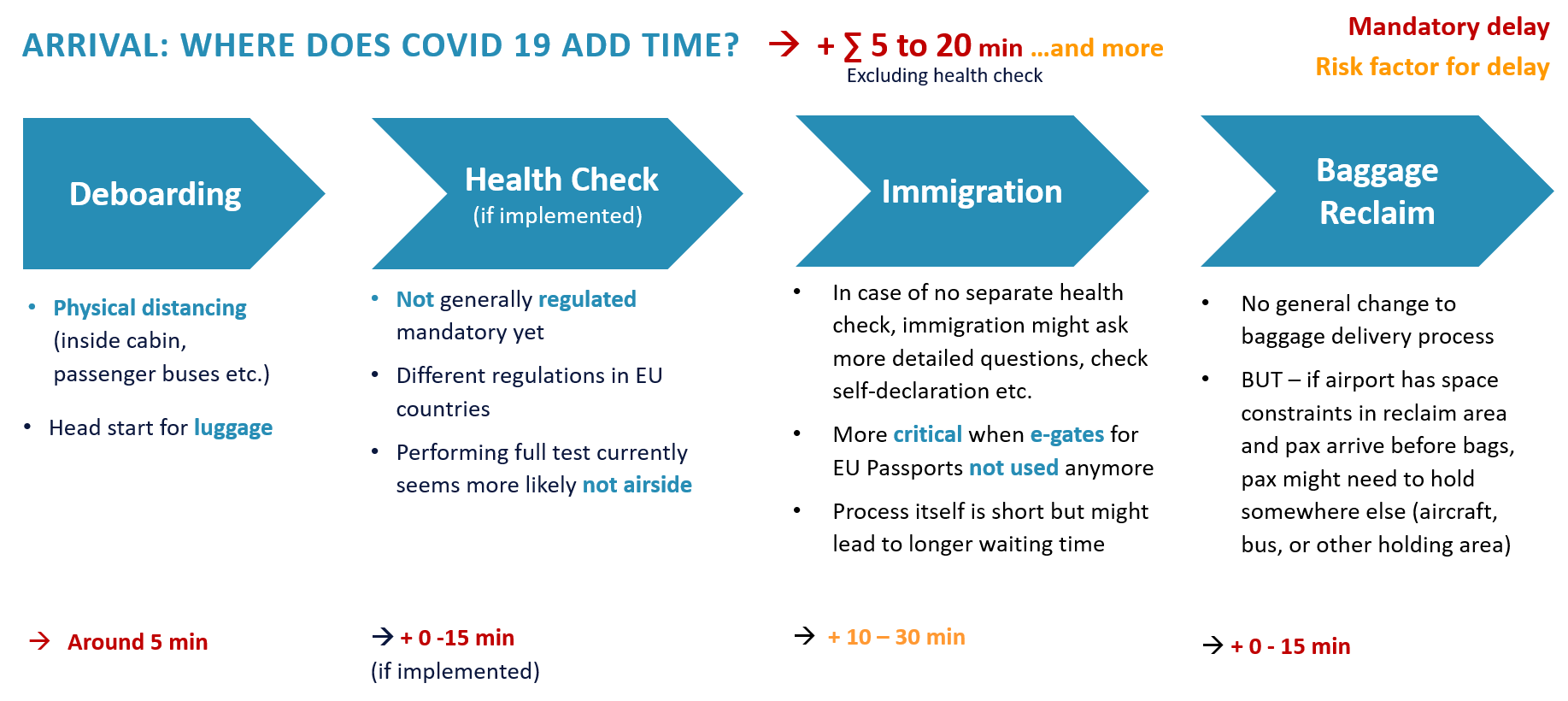The aviation industry was affected by COVID-19 like no other industrial sector. Airports need to be secured in order to minimize the risk of spreading the virus and maintain trust and confidence into air transportation again. In order to support a safe and smooth recovery from COVID-19 lockdown, EASA/ECDC, ICAO, ACI, and IATA issued guidelines and recommendations.
On behalf of EUROCONTROL the Airport Research Center GmbH (ARC) assessed the impact of the COVID-19 measures on airport capacity for terminal operations by using a simulation test environment representing a generic airport and various sub-scenarios.
